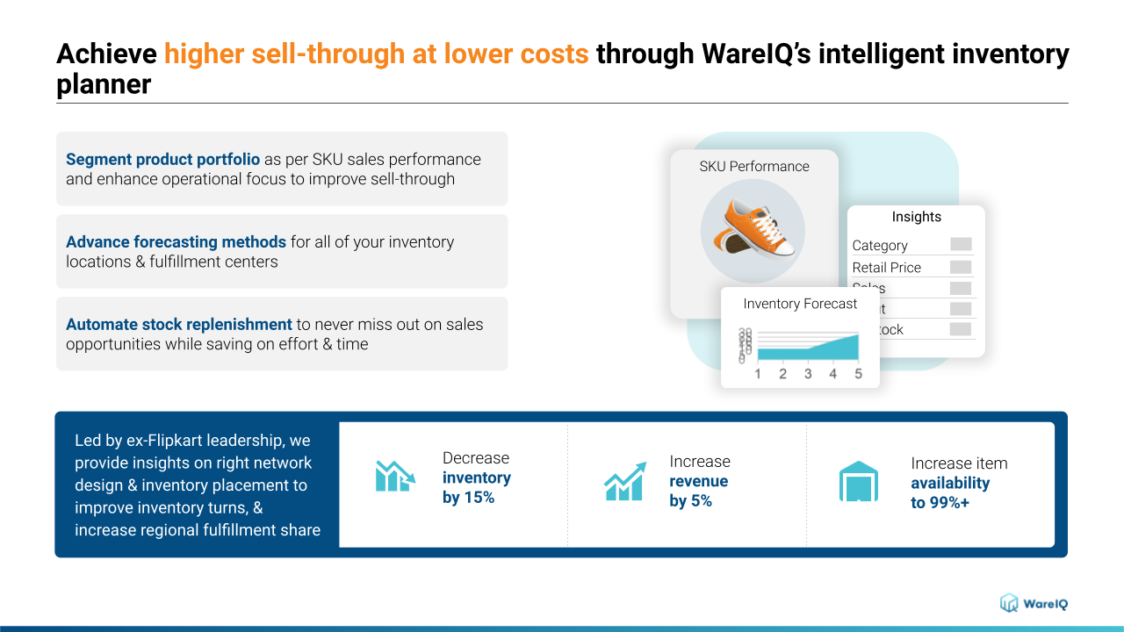Average Revenue Per Unit (ARPU): Definition, Formula to Calculate, and Methods to Increase ARPU in 2025

While running a business, you must keep an analysis of every important metric. You can observe things such as the quarterly revenue, cash flow, inventory sold, etc. As per the industry and new techniques of gaining customers against more revenue, there are several other metrics too. According to the business type, the KPIs (key performance indicators) needed can vary drastically. For instance, subscription services and product bundle sales will require the use of average revenue per unit, or ARPU.
To ensure that your pricing remains competitive and that you don’t lose clients to your competitors, it’s crucial to properly plan and prepare accordingly. A profitable pricing strategy should be balanced out with an increase that your clients would consider reasonable. In order to make informed decisions regarding your pricing strategy, it is critical to consider what your competitors are doing.
In this blog you will precisely learn about average revenue per unit (ARPU) and why it is crucial for business, how can you apply it, and how you can increase the magnitude of ARPU in your business.
- What is the Average Revenue Per Unit (ARPU)?
- How to Calculate Average Revenue Per Unit Using the ARPU Formula in?
- Benefits of Calculating Average Revenue Per Unit
- Pros and Cons of ARPU
- How Can Average Revenue Per Unit be Increased in 2025?
- Uses of Average Revenue Per Unit (ARPU)
- Average Revenue Per Unit (ARPU) vs. Customer Lifetime Value (CLTV)
- Conclusion: Increase and Maintain Your Average Revenue Per Unit With WareIQ
- Average Revenue Per Unit FAQs (Frequently Asked Questions)
What is the Average Revenue Per Unit (ARPU)?
The average revenue per unit is an important indicator of average profitability generated by each user or subscriber. It is mainly used in the telecommunications and media industries, which have a subscription-based revenue model.
In the eCommerce business, it helps sellers in inventory management as a KPI that reflects the data about the average revenue after selling one unit of an item.
Most phone carriers, internet service providers, software solutions, and the media and streaming sector use ARPU. It is also used for membership-based enterprises and subscription box services. So while it is a crucial statistic for managing inventory, it may also be used to determine performance when it’s impossible to track individual product sales.
WareIQ, an eCommerce fulfillment company, empowers online brands with a superior-tech platform to compete with Amazon like service levels by bringing their average delivery timelines from 5-10 days to 1-2 days.
How to Calculate Average Revenue Per Unit Using the ARPU Formula in?
To calculate ARPU, you need to define a certain time period. For reference, the majority of telephone and communications providers determine ARPU on a monthly basis. The number of units or users is then divided by the total income made during the standard time period.
Since it might not accurately reflect changes with time, the end date of the period is not used as the denominator. The average of the beginning and end of the determined duration is taken instead.
The number of users varies at any one time, particularly in sectors like media and telecommunications. Therefore, in order to calculate ARPU as accurately as possible, the number of units for a specific period must be calculated.
The calculation is quite simple. We need two values as mentioned below:
- The total revenue in a certain time period
- The number of users in that time period
Then divide the total revenue by the number of users
ARPU Formula = Total Revenue / Number of Users
Benefits of Calculating Average Revenue Per Unit
Helps Manage SKUs More Accurately
Your average revenue per unit, when utilized with SKU monitoring, aids in streamlining the SKU management process. This makes it possible for you as a seller to closely monitor which SKUs are selling quickly, which ones are moving slowly, which ones are more profitable and which ones are eating up your money.
After that, you can use these revelations to guide your SKU rationalization efforts. This is the procedure for determining which SKUs should be retired due to poor profitability and sales. Long-term eCommerce revenue is improved by an effective SKU rationalization process since the sooner slow-moving and unproductive SKUs are discontinued, the less money you will need to spend on procurement and holding fees. Therefore, you can easily increase your revenue by leveraging your average revenue per unit to enhance your SKU management.
Helps in Strategizing Pricing Plans
Optimizing your pricing approach is one of the main ways that figuring out your average revenue per unit can help your organization. This KPI can help you determine whether changing your product’s pricing strategy will increase profitability. In order to boost average order value and hence, your average income per unit, this revaluation may entail changing your product bundles. It might also entail gradually raising your product’s markup.
For an eCommerce business to grow, this is a critical stage. Over time, markups on prices and products need to be modified continuously. Additionally, knowing your average income per unit might serve as a benchmark for your decisions.
Enhances Warehouse Management
A crucial element in your inventory management procedure is calculating your average revenue per item. It helps you determine whether your inventory levels are ideal since if you have too much inventory, you may experience a lower average revenue per unit because you are paying more for purchasing and managing your inventory.
Furthermore, when a product stays unsold on the shelves, having an excessive amount of inventory in stock increases your chances of having deadstock. Due to the cost of purchasing things that are not getting sold, this further lowers your average revenue per unit.
However, it is simpler to determine which SKUs have higher profitability and inventory turnover and whether any slow-moving SKUs need to be terminated when you are actively monitoring your inventory movement and average revenue per unit. This makes it possible for you to establish the minimum order quantity (MOQ) for each unit, which is crucial for preserving the ideal amount of inventory throughout your warehouses and fulfillment facilities. By doing this, you avoid ordering too many slow-moving items and too few fast-moving ones.
Identifies Opportunities to Increase Revenue and Reduce Costs
Finding more ways to increase your revenue is probably one of the main benefits of calculating your average revenue per unit. This indicator enables you to identify which goods and services are effective at bringing in money and which ones are not. In order to maximize your offerings and increase your revenue, you must first choose how to do it.
Cost savings are yet another significant advantage of determining your average revenue per unit. Because increased expenditure frequently results in decreased income, your inventory-related costs may drastically impair your ARPU. Therefore, looking at your average revenue per unit will help you determine whether your costs for acquiring and maintaining inventory are too high. This is an excellent way to find any areas where you can reduce your cost of goods sold and cost per unit. Ideally, you ought to consider your ARPU in conjunction with the various expenses incurred.
Forecasts Growth and Revenue
Finding more ways to increase your revenue is probably one of the main reasons to calculate your average revenue per unit. This indicator enables you to identify which goods and services are effective at bringing in money and which ones are not. In order to maximize your offering and increase your revenue, you must first choose how to do it after optimizing it.
Suppose you want to focus more on one subscription box if it has a high ARPU, stock more of it and work to boost subscriptions for it. Alternatively, you might think about pairing well-liked, highly profitable SKUs with sluggishly moving SKUs to increase sales while avoiding deadstock. In the case of eCommerce services, you are aware of the high demand and more profitable products so you can store those and promote them to increase their sales velocity.
Pros and Cons of ARPU
Pros
- For investors, ARPU is a useful indicator for comparing a company with its competitors.
- It works as a metric to analyze a company’s strengths and weaknesses.
- It shows the acceptability rate among users if the ARPU number is impressively high.
- High ARPU can also boost a company’s reputation.
Cons
- Since ARPU is a metric at the macro level, it can be reported without the specifics that give it meaning.
- The trajectory of a business may be better indicated by user growth and user churn.
- There are situations when ARPU is reported without sufficient details.
- Low average revenue per unit can damage a company’s reputation and investors may find it risky.
How Can Average Revenue Per Unit be Increased in 2025?
There are several ways to increase ARPU depending on the business type and its usability. Many businesses, including telecom providers, try to increase their ARPU by offering bundles or more advanced levels of service to their present clients.
These two different business models use their internal data to determine which demographic groups are most valuable to them.
After identifying the most valuable group, the corporation focuses on encouraging growth within that group. Selling their current clients more expensive tiers or service bundles is one strategy used by many businesses, particularly in the telecom industry, to raise their average revenue per unit. Others, like media businesses, concentrate on raising advertising revenue.
Media and telecom businesses both do internal data analyses to determine which demographic groups are most valuable to them. The target market for the company’s growth will be gen X consumers or families with children if those groups look to be their most valuable customers in terms of their contribution to average revenue per unit.
Note: Many companies are decreasing their ARPU but adding more users to generate more revenue.
Uses of Average Revenue Per Unit (ARPU)
Telecommunication Companies
ARPU is a metric used by telecom companies like AT&T, T-Mobile, and Verizon to track the average revenue generated by each mobile phone subscriber. The value of revenue used to compute ARPU for a business in the mobile phone market includes any money from incoming calls and data charges that must be paid as part of the regulated interconnection system, as well as the monthly bills that users pay.
Social Media Companies
Companies in the social media space like Snapchat and Meta Platforms (formerly Facebook) provide investors with average revenue per unit data. The disparity in these metrics between the two businesses contributes to the substantial discrepancy in the two businesses’ values.
Subscription Services
The results of the metrics can be used both internally and externally to compare subscriber-based businesses and to help predict upcoming service revenues derived from a customer base.
Average Revenue Per Unit (ARPU) vs. Customer Lifetime Value (CLTV)
Some people mix up ARPU with client lifetime value. Despite their similarities, they both have different metrics. Their differences are laid out below:
| Particulars | Average Revenue Per Unit | Customer Lifetime Value |
|---|---|---|
| Definition | The average revenue per unit is an important indicator of average profitability generated by each user or subscriber. In the eCommerce business, it helps sellers in inventory management as a KPI that reflects the data about the average revenue after selling one unit of an item. | The average worth of a new customer's lifetime value is determined by their enrollment. Lifetime value also takes into consideration varying expenses like transaction fees, support, and refunds. |
| Formula | ARPU Formula = Total Revenue / Number of Users | LTV = (Lifetime Spend - Lifetime Variable Costs) / the number of new customers. |
| Use | ARPU measures the continued health of the business as a whole. | LTV measures the unit-level profitability of each user/customer |
Conclusion: Increase and Maintain Your Average Revenue Per Unit With WareIQ

WareIQ is a rapidly growing ecommerce fulfillment company that is based in India. It offers a variety of eCommerce services that can help you to increase and maintain your average revenue per unit by streamlining multiple processes and reducing your storage costs and operational costs. A few ways we can help are listed below:
- It gives you facilities like a nationwide network of fulfillment centers and offers no MOQ to help lower storage and transport costs and ultimately, APRU.
- We have partnered with more than 20 of the biggest shipping aggregators in the country and always assign the cheapest and best delivery partner for every order with real-time tracking.
- We give access to your sales and revenue data to assist in framing pricing strategies and getting further orders.
- It gives you RTO insurance which prevents the negative impacts of returns management.
- We help you forecast demand and supply which helps you in maintaining APRU.
- We help pack your goods in a customized manner (boxes or bags) which helps you in lowering packing costs.
- We help cut unnecessary involvements that cost you overall on your ARPU.
- We optimize your sales data and reflect your KPIs.








